I’ve eaten so many of these. Better and healthier than the cream pies from my childhood. Love that they ate gluten and dairy free!
What is Arrowroot and How Do You Use It?
Chances are you’ve heard talk of arrowroot powder by now. So what’s the deal with the latest must-have pantry staple? Well, although I’ve been patting myself on the back for adding it to recipes for the past year, it turns out I was a little late to the arrowroot party. Like several millennia late…
Arrowroot has been used for more than 7,000 years by various indigenous peoples of the Caribbean and South America, valued both as a food and for its medicinal properties. In recent years it has gained global popularity for its various uses in gluten-free cooking and baking.
Arrowroot powder – sometimes called arrowroot flour, arrowroot starch, or just plain old arrowroot – is derived from the West Indian plant of the same name, also known as Maranta Arundinacea.
Some folks have suggested that the English name for the plant may have come from the traditional practice of using it to treat wounds caused by poisonous arrows. Now while my kitchen can certainly get dangerous when I’m multitasking, I’ve (so far) been able to dodge flying arrows while flipping my veggie burgers — so what are some more applicable, everyday uses of this versatile ingredient?

This grain-free superhero is a great substitute for traditional flours and cornstarch, and can even replace eggs and gelatin in certain recipes. Its culinary uses are countless, but there are three main times I find myself getting out the stepstool and reaching for the arrowroot powder: when I want to thicken, crunchify, or fluffify. (Take note of those last two, Merriam-Webster; it’s time to make ‘em official.)
It Thickens
Let’s talk thickening first. Unlike its celebrity cousin cornstarch, arrowroot is easily digestible and can even help settle an upset tummy. It’s an all around healthier thickening agent, as it’s non-GMO, won’t cause allergic reactions, and does not undergo the intense heat and chemical-laden extraction method cornstarch does. Arrowroot powder is obtained in a much more natural fashion. The plants are soaked in hot water, the roots are peeled, mashed, and washed to separate the starch from the pulp. Then the starch is dried and ground into a fine powder. Voila!
I love using arrowroot to thicken up soups, mushroom gravies, and stir-fries. And it adds a nice creaminess to vegan pasta dishes. I really like that Arrowroot creates a clear gel and that it’s virtually tasteless. Sometimes cornstarch can make your sauces cloudy and even add a slightly unpleasant flavor. Another plus is that unlike cornstarch, sauces made with arrowroot freeze and thaw really well, which is super helpful for those big batch dinners.
Here’s a trick to remember when using arrowroot as a thickener: Don’t add arrowroot directly to your pan, as it will break down at high temperatures.
First you’ll want to make a “slurry.” Do this by mixing equal parts arrowroot powder and cool water (or other liquid.) Whisk this up before adding to your recipe, and always add it near the very end of cooking to avoid clumping. Wait till the last minute or so and your sauce will thicken beautifully.

It Crunches
Arrowroot is also a great way to add that oh-so-satisfying crunch to a delicious batch of baked sweet potato fries. Just coat the raw fries evenly with a couple tablespoons of the powder, then drizzle with oil before you pop ’em in the oven. Wave goodbye to soggy fries.
I also like to dust cubes of extra firm tofu with arrowroot powder and seasoning before I pan-fry them. Say hello to next-level crispiness. Mushy tofu is so 2,000 years ago.
It Fluffs
Now let’s talk fluffifying. Arrowroot powder works great in conjunction with almond and coconut flours, which can sometimes be a little dense on their own. Arrowroot can really help lighten up the texture of gluten free cakes, cookies, and breads. And, of course, pancakes. (How did I not lead with pancakes? One should always lead with pancakes.)
There are plenty of other uses for arrowroot. A quick internet search will lead to you tons of mouth-watering recipes. Try using it in homemade puddings and jams, or as a vegan-friendly binding agent for those uncooperative veggie burgers that just keep wanting to fall apart. (I’ve been there too often.)
Nutrient-rich
On top of being naturally vegan, gluten-free, low-calorie, and great for folks with digestive sensitivities and allergies, arrowroot is also full of fiber and contains essential nutrients like B vitamins, iron, and potassium, which contribute to a healthy metabolism, blood circulation, and heart health.
So go on and experiment with this multi-talented starch. I know I will. I recently heard that a couple tablespoons of arrowroot powder will keep ice crystals from forming on homemade ice creams, which I will definitely put to the test.
And fortunately the antidote will already be in my hands when those pesky poisonous arrows come flying through the kitchen window. Phew!
----------



